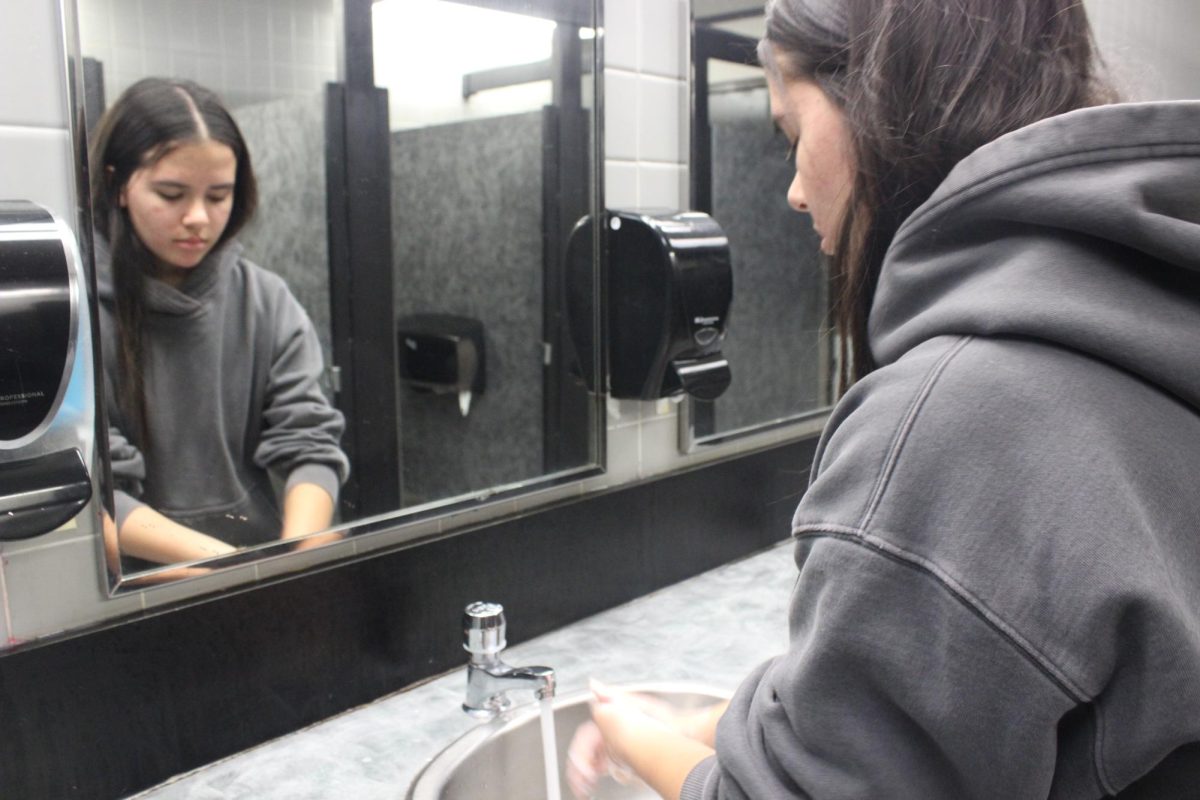Clutching their stomach, a student steps into Bowie nurse Felicia Culbert’s office. As the student recounts vomiting and having diarrhea, Culbert suspects what has infected the student- yet another case of Norovirus.
651 norovirus outbreaks were reported to the CDC between December 5th, 2024, and January 9th, 2025, far exceeding the number of outbreaks reported during this period in any year since 2012.
“We’re seeing a case every day at least,” Culbert said.
According to the CDC, norovirus causes 19-21 million cases of illness in the U.S. per year and is the leading cause of vomiting and diarrhea from gastroenteritis. Gastroenteritis, or the inflammation of the stomach and intestine, causes stomach pain, vomiting, and diarrhea. Other symptoms of norovirus include fever, headaches, and body aches.
“That’s your body’s way of trying to get the virus out,” Biology teacher Masie Martin said. “So even though it’s really uncomfortable, it’s in your stomach track and your body needs to get rid of it.”
On average, 2,500 norovirus outbreaks are reported to the CDC per year. Within the data released by the CDC so far, reported outbreaks peaked at 142 the week between December 5th and 12th, more than what has been reported in any week since 2012, which is as far back as the data stretches. Most recently, 97 outbreaks were reported between January 9th and 16th.
“It could be that people are reporting it more, but I also know since covid theirs been a resurgence of a lot of different illnesses,” Culburt said. “I think since after covid, people’s handwashing and sanitization have gone down.”
Norovirus is highly contagious, spreading through direct contact with a contaminated person or surface or by consuming contaminated food or drinks. Norovirus spreads the most easily in environments involving close contact and shared, high-touch, spaces, such as schools. Most outbreaks are reported between November and April.
“I think when everybody is together, it’s easy for things to pass around,” Culbert said. “Especially in the colder months, the virus has an opportunity to spread.”
While norovirus is highly contagious, its spread is best prevented through good handwashing for 20 seconds with soap and water. Handwashing prevents individuals who come in contact with norovirus particles from infecting themselves or others when touching food or their mouths.
“Nobody at Bowie washes their hands enough,” senior Neela Lerma said. “The amount of time I’ve been in the bathroom and have seen people leave without washing their hands is jaw-dropping.”
A person typically recovers from norovirus within 24-72 hours. However, norovirus can be spread more than two weeks after a person recovers. Although, a person is the most contagious when they are experiencing symptoms.
“It’s fast and furious, people get very sick and then recover pretty quickly,” Culburt said. “I see the beginning of it, then I send them home and they have to be vomit-free for 24 hours without medication before returning to school.”
There is no specific vaccine or medicine to help treat norovirus. Treatment most prominently involves hydration to replace fluids lost to vomiting and diarrhea and rest.
“If you are experiencing norovirus symptoms, make sure you’re resting and drinking lots of fluids to replace everything you’re losing,” said Martin. “Most importantly, you need to stay home because it’s such a contagious disease.”








